9 Things You Didn’t Know About Beanie Babies
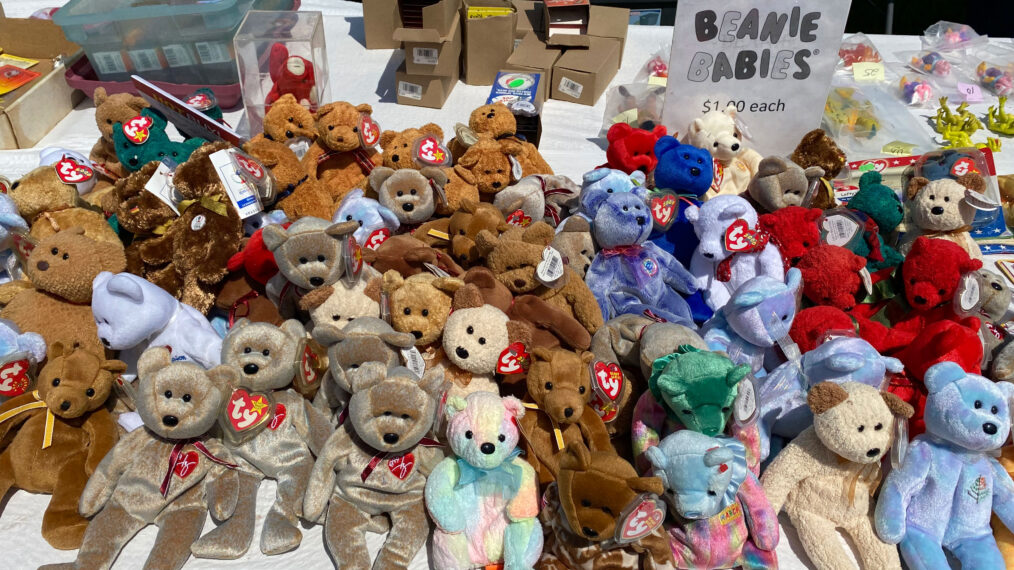
Chances are you have (or had) a Rubbermaid container packed in a closet or tucked away in your basement that is chock-full of these cuddly little plush creatures, but all you really want to know now is: “How much are my Beanie Babies worth?” It’s the age-old question so many ’90s collectors have about their love affair with their under-stuffed toys that were supposed to make them millions. Today, Beanie Babies still fascinate the public and continue to be one of the most appraised toys in the collectible marketplace. But did you know the following?
1. It Started With a Cat
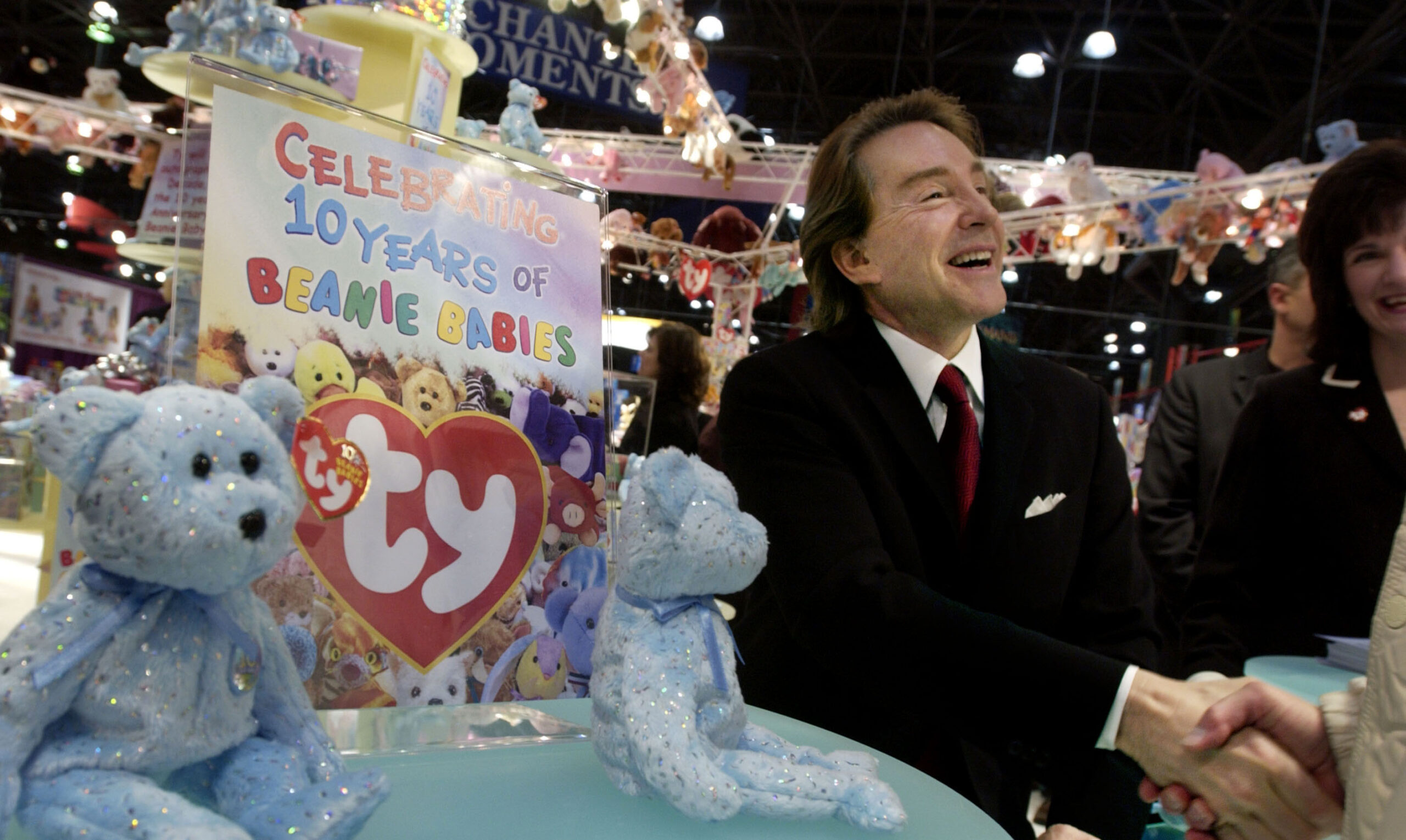
Chris Hondros/Getty Images
While Illinois entrepreneur Ty Warner founded Ty Inc. in 1986, his first toy was actually a plush, also understuffed, lifelike cat that never took off. He knew he was onto something with his understuffed pellet-filled animals and was quick to pivot based on what he learned — adding more color, those heart-shaped name tags and an affordable price. He introduced the world to his Beanie Babies in 1993.
2. The Willy Wonka of the Toy Industry
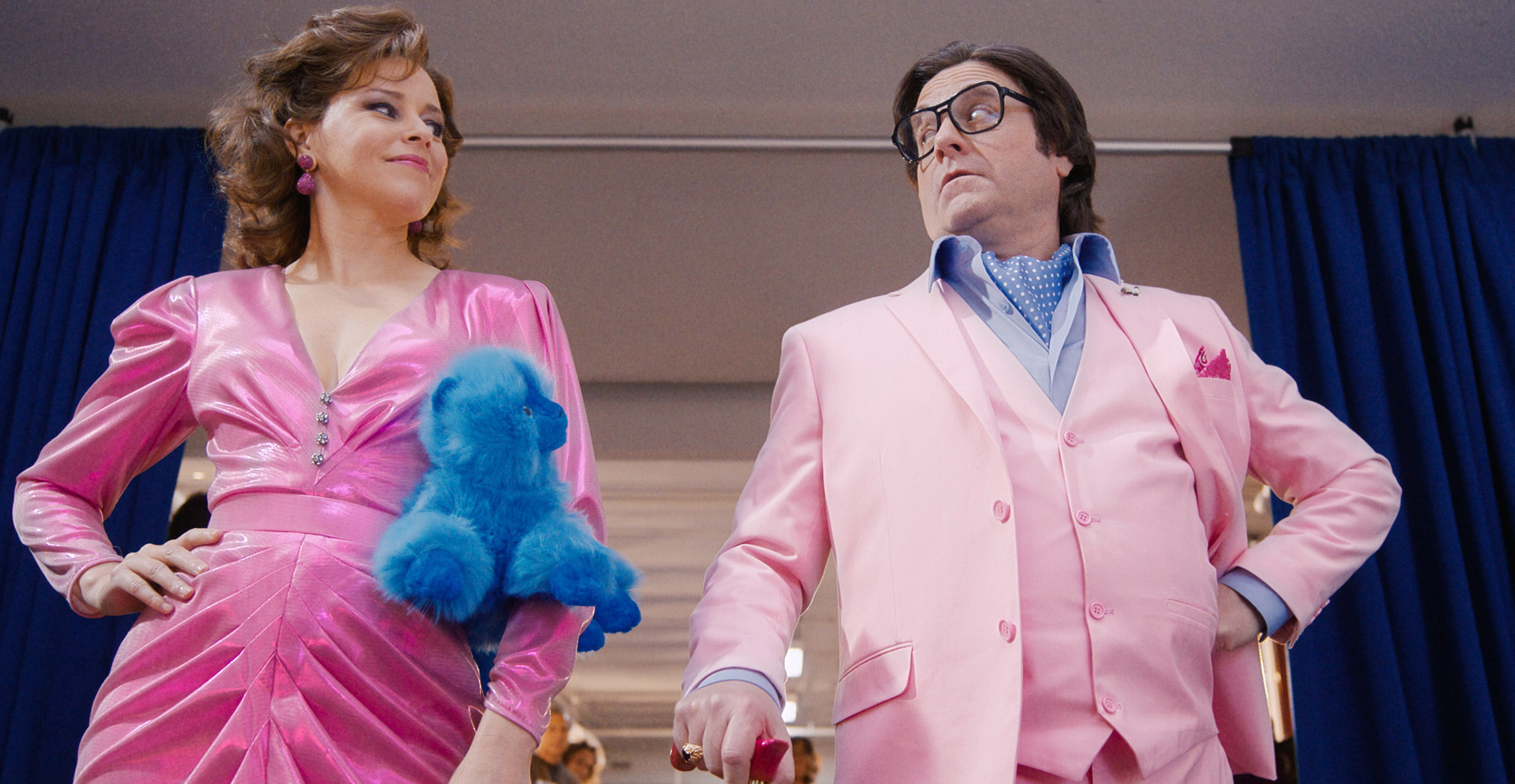
Credit: AppleTV+
Ty Warner truly is the Willy Wonka or the Great Oz of the toy world. The billionaire, now 78, is the sole owner and CEO of Ty Inc., and leads a super-secretive life, rarely seen in public. In his early days when he was pitching his Beanie Babies to local retailers (he avoided the big chains on purpose), Warner would drive around in an unusual car, dressed in a full-length fur coat and top hat. His strange aura immediately intrigued his sales prospects and opened the door to pitch his Beanies. In 2014 he appeared in front of a judge to hear his sentencing for tax invasion. He received two years of probation, a $100,000 fine and 500 hours of community service, because his retributions were deemed fair, having paid civil penalties, back taxes and making countless charitable donations.
The Hangover’s Zach Galifianakis stars as Ty Warner in The Beanie Bubble, which premieres on Apple TV+ July 28 (and in theaters beginning July 21).
3. The Original 9
The original nine Beanie Babies were introduced at the World Toy Fair in New York City in 1993, and included Legs the Frog, Patti the Platypus, Spot the Dog, Squealer the Pig, Brownie (later called Cubbie) the Bear, Chocolate the Moose, Pinchers the Lobster, Splash the Whale and Flash the Dolphin. To remain in the ever-popular, limited-edition collecting realm, Ty Inc. offered only 50 official Beanie Babies to be sold in one calendar year. Splash and Flash were retired in May of 1997, Legs and Spot in October of 1997, Cubbie in 1997 and the others in 1998.
4. The Cul-de-Sac
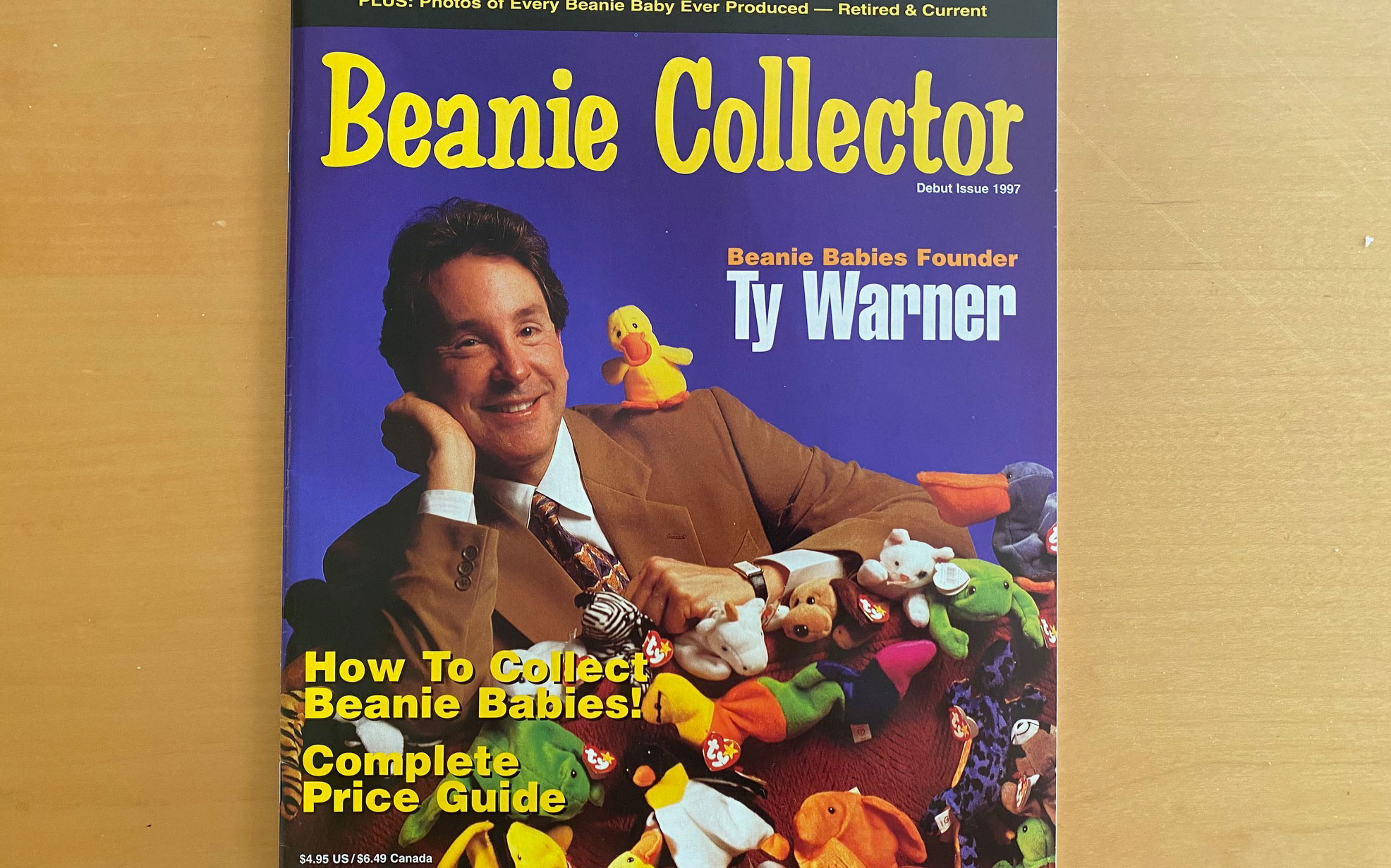 Before social media existed, a group of women living in Naperville, Illinois, are credited for starting the Beanie Baby craze with their obsessive collecting that began in 1996, well before the toys hit the mainstream. Joni Hirsch Blackman, a former People magazine reporter, was one of them and is the only journalist who ever interviewed Warner. Since Warner did little marketing or media interviews, these women became Beanie Baby advocates and “authenticators” for collectors, and were the faces for media interviews. One of the moms, Mary Beth Sobolewski, who lived in nearby Lisle, was the official publisher of Mary Beth’s Beanie World magazine, where she charged $40 for an annual subscription (she was sued by Ty and settled out of court). All are featured in the HBO documentary Beanie Mania. Other magazines followed including Jeffrey Beckett’s Beanie Collector (pictured above) that came out in 1997 and was sold for $4.95 an issue/$19.95 for a one-year subscription. Mary Beth Sobolewski was also a contributor to the title. He shared: “As the popularity of Beanie Babies grew beyond anyone’s wildest expectations, it became clear that many collectors were flying blind, not knowing what many of the items they were seeking even looked like. Our mission in this first issue was to educate all collectors in the many varieties of Beanies currently on the market, the history of the hobby, and ways to make it even more fun that it already is.”
Before social media existed, a group of women living in Naperville, Illinois, are credited for starting the Beanie Baby craze with their obsessive collecting that began in 1996, well before the toys hit the mainstream. Joni Hirsch Blackman, a former People magazine reporter, was one of them and is the only journalist who ever interviewed Warner. Since Warner did little marketing or media interviews, these women became Beanie Baby advocates and “authenticators” for collectors, and were the faces for media interviews. One of the moms, Mary Beth Sobolewski, who lived in nearby Lisle, was the official publisher of Mary Beth’s Beanie World magazine, where she charged $40 for an annual subscription (she was sued by Ty and settled out of court). All are featured in the HBO documentary Beanie Mania. Other magazines followed including Jeffrey Beckett’s Beanie Collector (pictured above) that came out in 1997 and was sold for $4.95 an issue/$19.95 for a one-year subscription. Mary Beth Sobolewski was also a contributor to the title. He shared: “As the popularity of Beanie Babies grew beyond anyone’s wildest expectations, it became clear that many collectors were flying blind, not knowing what many of the items they were seeking even looked like. Our mission in this first issue was to educate all collectors in the many varieties of Beanies currently on the market, the history of the hobby, and ways to make it even more fun that it already is.”
5. There’s a Beanie Baby Doctor
When factoring in the value of almost anything, obviously, the condition of the item definitely matters. Dr. Lori Verderame holds a Ph.D. in art history and is an antiques appraiser who reviews about 20,000 items a year. She is the person to reach out to if you want to get your Beanie Baby collection appraised (www.drloriv.com). When asked which Beanies should make a collector excited if they own one, Dr. Lori shares: “Princess, Peace the Bear, Valentino and Chocolate. And Halo probably. And I could say definitively these have been very valuable in the market and have held their values. And on my website, I give you other tips of what other ones I would look for, like the original nine and those types of things, because those have always done very well.”
6. Appraisals Matter
There are a lot of factors that come into play when it comes to evaluating Beanie Babies, and giving each a true retail value, not some crazy value that people list on eBay, is critical. “I have clients over the years who have paid easily thousands for rare Beanie Babies. So when people say, ‘Oh no, no one’s ever paid that,’ well, yeah, they have,” Dr. Lori tells us. “I’ve seen the market fall, and I’ve seen the market go sky high.”
7. Those Little Red Tags
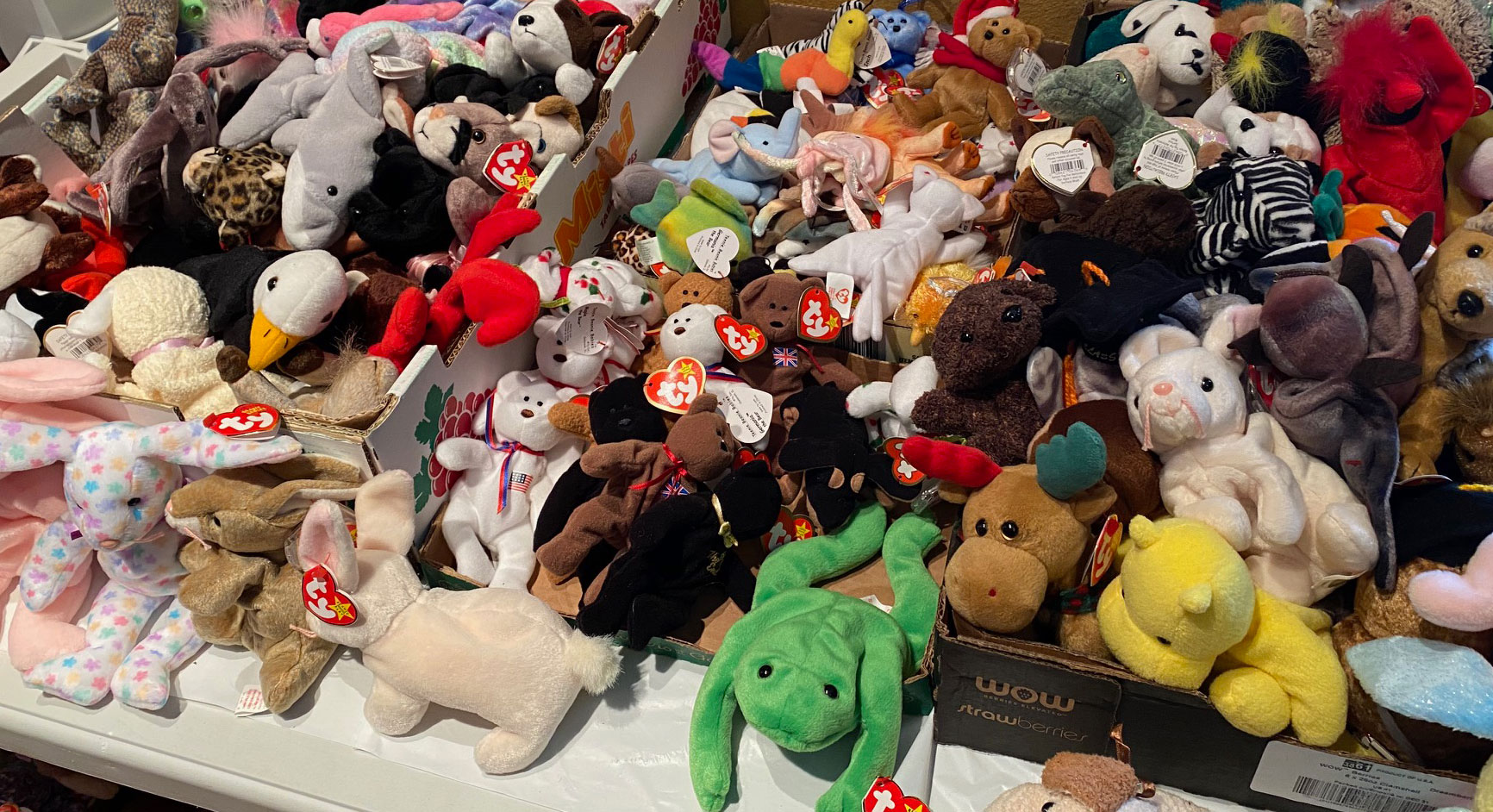
Barb Oates/ReMIND Magazine
Every Beanie Baby comes with a tag that identifies the toy’s name and shares a poem about it. “Everybody talks about the tags. Well, the tags are important, but they’re not the only factor,” Dr. Lori adds. “We also look for condition. We look for things like is there pellet deterioration in the belly and the arms? Are the eyes straight? I’ve seen a lot of them where the left eye is about a quarter of an inch lower than the right eye. I’ve seen these kinds of things that will impact value, too. Collectors are very picky.”
8. Timing Matters When Selling “Princess the Bear”
In 1997-98, retail stores only received 12 Princess Beanie Babies — the purple bear with the white rose on the chest — which was released after the death of Princess Diana. Today these bears can be listed on Amazon or eBay from anywhere in the hundreds to under $20. Selling at the right time is important for any collection — anniversary dates in particular — so those who sold their Princess around the 25th anniversary of Princess Di’s death most likely made far more money.
9. The Billionaire Bear Bust
When Beanie Babies launched in 1993, Ty Inc. had a staff of around 14 employees. In 1998, sales hit $1.4 billion, and the company moved to a larger facility employing several hundred. Working for Ty Inc. had its perks. The first year Warner became successful, he gave all of his employees their annual salary as their bonus. The following years, they received a Billionaire Bear, which was estimated to cost about 35 cents to make; however, limited quantities were made, signed and numbered, and were deemed to hold a staggering value (roughly $3,500) on the secondary market in 1999. Today, they could be listed from $15 to $1,200.
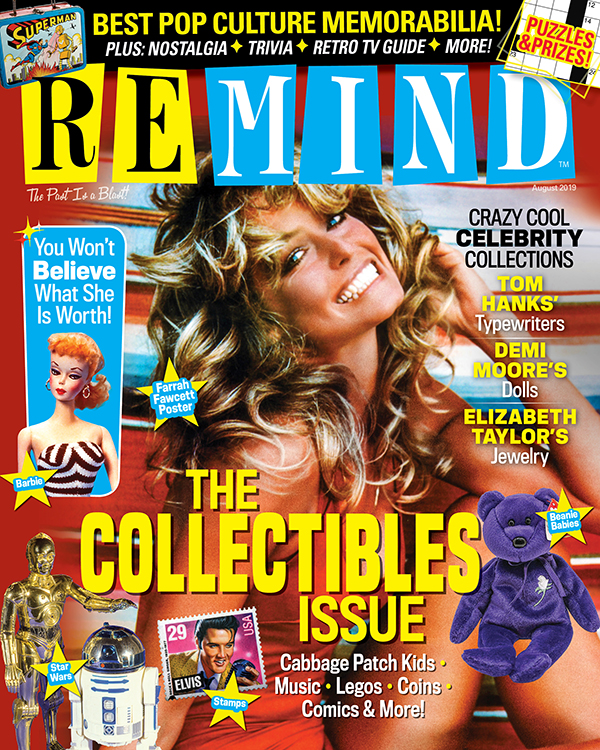
The Collectibles Issue
August 2019
Take a tour of the collectible world, from celebrities with unusual acquisitions to regular folks who have turned playthings into a profitable passion.
Buy This Issue